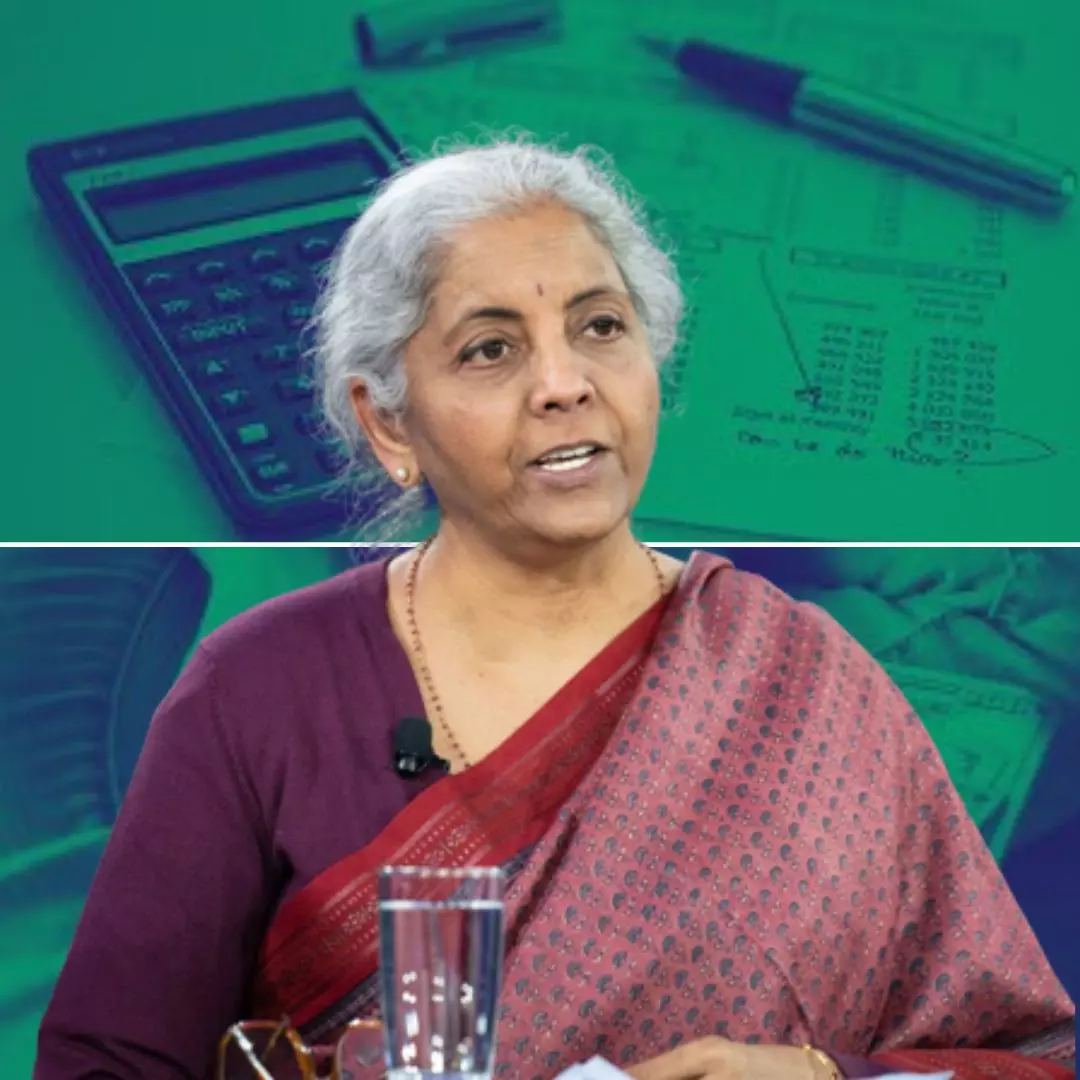
Image Credits: Pexels, International Tax Review
Budget 2023: Revised Tax Slabs To Reaching Last Mile, Here Are Key Takeaways From FM Nirmala Sitharaman's Speech
Writer: Laxmi Mohan Kumar
She is an aspiring journalist in the process of learning and unlearning many things. Always up for discussions on everything from popular culture to politics.
India, 2 Feb 2023 7:26 AM GMT
Editor : Jayali Wavhal |
She writes about gender issues, human interest, and environment.
Creatives : Laxmi Mohan Kumar
She is an aspiring journalist in the process of learning and unlearning many things. Always up for discussions on everything from popular culture to politics.
The last full budget presented by the Narendra Modi government before the 2024 elections, saw emphasis on the financial sector through empowerment of several groups in the country.
Union Finance Minister Nirmala Sitharaman presented the last full budget in Parliament before the 2024 elections on February 1. In the presented budget, the Narendra Modi government has placed the priority on seven significant aspects, including inclusive, green growth, reaching the last mile, infra & investment, unleashing the potential, Youth power, and the financial sector. Sitharaman also stated that the 2023-24 budget would attract more private investments through the newly established finance infrastructure. Here are the some of the key takeaways from the Budget 2023:
- Income Tax And New Slabs
The Finance Minister announced an increase in the income tax rebate limit from ₹5 lakhs to ₹7 lakhs. Under the same, the new slabs applied under the tax regime are as follows,
₹0-3 lakhs : Nil
₹3-6 lakhs: 5 per cent
₹6-9 lakhs: 10 per cent
₹9-12 lakhs: 15 per cent
₹12-15 lakhs: 20 per cent
₹Over 15 lakhs: 30 per cent
The indirect taxes that would be incurred include a 16 per cent increase in National Calamity Contingent Duty (NCCD) on certain cigarettes. There would be an increase observed in the import duty of silver bars to align them with gold and platinum. However, a cut is noted in the customs duty on lab-grown diamonds.
On industrial levels, custom duties on compounded rubber have been raised, cuts on imports of parts of mobile phones have been extended by a year, and EV batteries have been exempted from customs duty. According to a report by the Deccan Herald, the budget aims to promote value addition in manufacturing of televisions, for which customs duty on open cells of TV panels has been reduced to 2.5 per cent.
- Women And Senior Citizens
A one-time new small savings scheme - Mahila Samman Savings Certificate, will be made available for a two-year period up to March 2025. It would offer a deposit provision of upto two lakhs at a fixed interest rate of 7.5 per cent for women or girls for a tenor of two years.
For senior citizens, the maximum deposit limit for Senior Citizen Savings Scheme will be raised from ₹15 lakhs to ₹30 lakhs. Similarly, the maximum deposit limit under the Monthly Income Account Scheme will be raised from ₹4.5 lakhs to ₹9 lakhs for a single account and ₹9 lakhs to ₹15 lakhs for a joint account.
- Health And Education Sectors
Over 150 new nursing colleges will be established, along with the existing 157 medical colleges established since 2014. To encourage collaborative research and innovation, facilities in select ICMR Labs will be made available for research by public and private medical college faculty and private sector research and development teams.
The budget also notably mentioned the launch of a Mission to eliminate Sickle Cell Anaemia by 2047. This would entail several awareness campaigns, universal screening of about seven crore people in the age group of 1-40 years in affected tribal regions, and counselling through the centre and state government's collaborative efforts.
On the education front, within the next three years, Centre would be recruiting 38,800 teachers and support staff for 740 Eklavya Model Residential Schools that serve 3.5 lakh tribal students. Training of teachers will be re-envisioned through innovative pedagogy, continuous professional development, dipstick surveys, curriculum transaction, and ICT implementation. District Institutes of Education and Training will be accordingly developed to fulfil this purpose.
- Capital Expenditure And State Support
The Centre's 'Effective Capital Expenditure' is budgeted at ₹13.7 lakh crores, which will account for 4.5 per cent of the Gross Domestic Product (GDP.) Capital investment outlay would be increased steeply for the third year in a row by 33 per cent to ₹10 lakh crore - almost three times the outlay in 2019-20.
The direct capital investment made by the Centre is complemented by the provision made for the creation of capital assets through Grants-in-Aid to States. The Centre would be extending the 50-year interest-free loan to state governments for another year to spur investments in infrastructure and incentivize them for complementary policy actions.
- Fintech And 5G Services
To expand the scope in the Fintech innovative services, the scope of documents available in DigiLocker for individuals will be expanded. The DigiLocker facility will be set up for use by MSMEs, large businesses, and charitable trusts for storing and sharing documents securely in the virtual space. On the network development front, a hundred labs will be set up for developing applications using 5G services in engineering institutions. This would help realise new opportunities, business models, and employment potential. Furthermore, a unified Skill India Digital platform will be launched to enable demand-based formal skilling, linking with employers, including MSMEs, and facilitating access to entrepreneurship schemes.
- Other Notable Allocations
The budget proposed sector-specific skilling and entrepreneurship development to achieve the objectives proposed under the 'Dekho Apna Desh' initiative. The initiative was launched by the Prime Minister as an appeal to the middle classes to prefer domestic tourism over international tourism.
About 50 additional airports, heliports, water aerodromes, and advanced landing grounds will be revived to improve regional air connectivity. For better connectivity, a capital outlay of ₹2.40 lakh crores has also been provided for the Railways. This is the highest-ever outlay the country has proposed, about 9 times the outlay made in 2013-14.
In regard to Urban Sanitation, all cities and towns will be enabled for 100 per cent mechanical desludging of septic tanks and sewers. This was proposed to bring about a transition from the existing manhole to machine-hole mode. An enhanced conceptualisation has been put in place to provide for the scientific management of dry and wet waste.
Also Read: Budget 2023: Finance Minister Nirmala Sitharaman Shares Plan For Middle-Class, Hints At No New Taxes
 All section
All section














